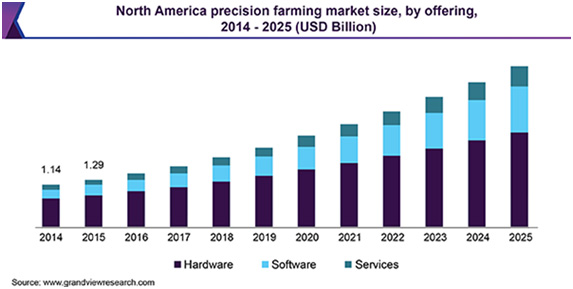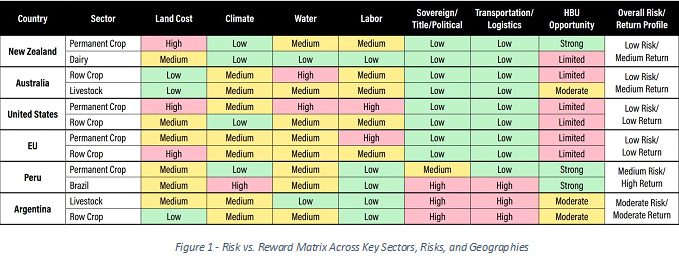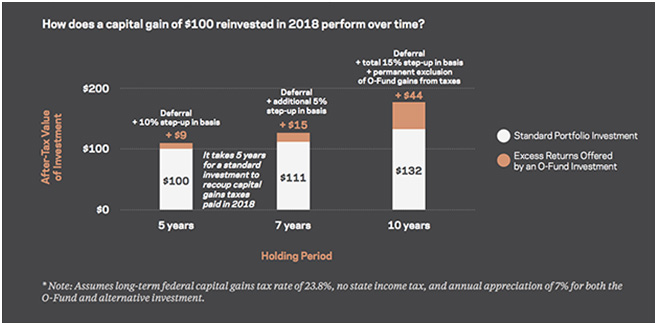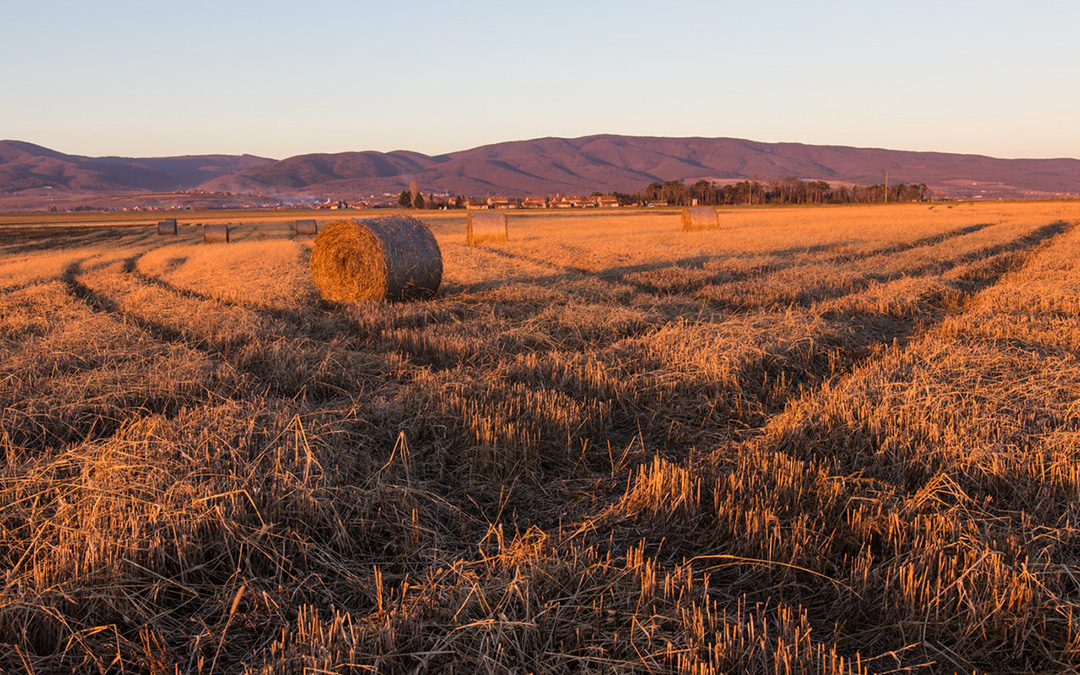Food is one of mankind’s most basic survival needs and yet, the means by which is it produced, is largely misunderstood and underrepresented by the investment community. Agriculture is one of the oldest investment sectors in the world, time-tested and proven to weather economic uncertainty. Yet even today as farmland is widely acknowledged as an alternative investment, many investors are skeptical of incorporating it into their portfolios because of a lack of clarity as to how it fits into their investment strategy, concerns over liquidity,and from a fear of volatility due to direct commodity exposure. The reality is that the long-term trends within this sector are firmly entrenched as key value drivers, offering accessible opportunities to investors willing to explore diversification across the value chain.
With the global population expected to reach nearly 10 billion by 2050, the development of a robust food system will not only be crucial to ensuring this larger population is nourished, but force the lands and systems which produce these necessities to remain economically viable. Demand for food is outpacing population growth as global eating habits continue to evolve from a predominantly vegetable diet to a mix of animal-based proteins and more nutritious fruits and vegetables. Global meat consumption per capita more than doubled from 20 kg per year in 1961 to 42 kg in 2014[1] while the annual global population growth rate slowed by nearly 20 percent[2]. As we move through a greater frequency and variety of dietary changes, additional land will be required to produce the necessary food profiles. Competition for key resources such as water and arable land will continue to drive innovation and efficiencies while changing consumer values and ethical stances on food production are likely to further bolster long-term demand for more sustainable agriculture. All of these factors are net positive for a strong investment sentiment within the global food and agriculture sector for years to come.
Investment Opportunities Abound Across the Asset Class
Within the agricultural value chain, there are a number of different opportunities for both return generation and capital preservation, each with unique investment characteristics.The upstream segment of the ag value chain includes inputs to agriculture, such as seeds, crop inputs, machinery, technology, and farmland. Three in particular have grabbed investors’ attention recently: biologicals, precision technology, and farmland. Biologicals are crop input products derived from naturally occurring chemicals and/or living organisms. Precision ag technology consists of a host of technologies designed to make the practice of farming more accurate and controlled when it comes to growing crops and raising livestock. These two sectors are generally regarded as a higher risk and therefore command higher returns – a potentially attractive proposition to an experienced investor looking to exploit early-mover advantages. According to a March 2018 article published by Forbes on the biological sector in agriculture, biologicals have expanded their sales at a compound annual growth rate (CAGR) of around 17 percent[3]. Investors are often drawn to this sector by compelling profit margins, which can be as high as 20 to 40 percent[4].

These kinds of products tend to be lower in toxicity then traditional synthetic chemistries, impact the environment in a generally “softer” manner, and can be developed in a shorter time period with fewer developmental dollars[5]. While there are still challenges with the lack of harmonization across regulatory organizations, market fragmentation, top-level consolidation, and a competitive landscape dominated by large multi-nationals, these products will remain an important tool in the farmer’s diversified toolbox employed to enhance yields in a sustainable manner.
Precision ag technology has been one of the most innovative and disruptive sectorswithin the asset class. Advances in computer vision, artificial intelligence, and analytical software have fundamentally transformed the operational processes and expectations within the industry. Estimates show that the global precision farming market is expected to reach US$10.23B by2025 with a forecasted CAGR of 14.2 percent[6], highlighting a continued interest in this sector.

A significant proportion of the driving force behind the incorporation of new technology into the farm has come from millennials. With sixty percent of US farmers over the age of 55[7],many are looking for someone new to take up the mantle. According to the Ag America Leading’s 2017 Fast Facts about Agriculture informational page, millennial farmers make up eight percent of US farmers[8] with this number growing every year. Couple that with the fact that 20 percent of all current farmers are considered “beginning farmers” (less than ten years of farming experience) and it becomes easy to see the impact of the millennial mindset on the ag industry. The pressures of resource scarcity, increasing population,and changing dietary demands will continue to benefit the ag technology sector as young, innovative producers produce more food with less water, fewer traditional chemicals, and with less impact on biodiversity.
Production agriculture includes animal protein, aquaculture, and of course,farmland. Farmland in particular has historically proven itself as a tangible, long-term, stable store of wealth, appreciating nearly nine percent annually over the last seventy years in North America[9]. A Global Farmland Index developed by Savills World Research and illustrated by the dotted line in the graph below is comprised of data from 15 key farmland markets across the globe. This index highlights an average annualized growth since 2002 of 13.3 percent.The strong, steady growth also illustrates a reduced volatility when compared with other key commodities.

When compared to other selected asset classes within the US markets and global commodities, farmland and timberland have upheld their reputation as uncorrelated, low risk asset classes with strong annualized real returns. Additionally, as a “real asset”, farmland will never reach a nominal value of zero so long as it remains productive.

When compared to the S&P 500, the market index that represents approximately 80 percent of the value of the US stock market, farmland investments outperformed the S&P over a 10-year span. As the graph below illustrates, the 2008 financial crisis had virtually no impact on the NCREIF Farmland Index’ investment value, further highlighting agriculture as a secure, stable alternative uncorrelated with the equities market.
Market Index Comparison – Annual Returns 2008 – 2017

Sources: National Council of Real Estate Investment Fiduciaries (NCREIF), TIAA/University of Illinois – Center for Farmland Research (Correlation and standard deviation data from 1970-2016)
Finally, mid and downstream opportunities within the sector offer additional ways for investors to capitalize on several eminent macroeconomic drivers. Large harvest yields generally lead to lower commodity prices due to market saturation, but for downstream groups such as traders, processors, packagers, retail distributors, and wholesalers, this means their processing plants may operate at a greater capacity, while input materials are reduced in cost. Full plants and slaughter houses can lead to additional revenue and stronger returns for investors. Mid and down stream investments provide investors with less naked commodity risk and if diversified across crop type and geography, can serve as a hedge against the cyclical nature of the agriculture asset class.
Investing across the value chain can be synergistic and reduce intermediation and inefficiency costs. Attractive agribusiness opportunities are available across the globe, if you know where to look and what to avoid.
Myths, Misconceptions and Means of Mitigation
Agriculture can be misunderstood as an asset class. Illiquidity can be seen as an obstacle and value chain components may be taken in isolation, painting an incomplete picture of the risks and rewards. Capital is often misallocated and misaligned given a particular risk tolerance and the diligence required around the different components of an asset is frequently not fully understood or performed.
Illiquidity is often cited as a primary reason for avoiding the sector all together. There are, however, creative options for liquidity in this sector. Secondary markets for farmland are becoming a real possibility for private investors as the customer base for ag-focused crowdfunding platforms and parceled ownership structures increase. The larger these decentralized investment platforms become and the more parcel owners there are within a given plantation, the more buyers there are should an investor need/want to exit. Lower interest rates have also opened the door on the debt side for increased allocations to ag lenders. According to the Federal Reserve Bank of Kansas City, total non-real estate farm loans were up nearly eight percent from a year ago. This was the seventh consecutive quarter of annual growth in loan volumes with an average growth rate in 2018 of about 12 percent[10]. Real Estate Investment Trusts (REIT) offer additional opportunities for retail investors to participate in the ag sector with higher liquidity options. Gladstone Land Corporation (LAND) for example, is one of two publically-traded Farm REITs. Finally, many institutional investors are also looking closely at higher-value permanent crops with longer production life cycles. These business models typically involve the development of greenfield plantations with 10-15 year off-take agreements. This long-term approach offers a strong return over a given time period while simultaneously providing lower price volatility for the off-taker, although they can carry higher operational risk.
Allocation is often an area new investors find challenging.Within the agtech sector for example, some see only the growth projections within the broader sector and interpret lower adoption rates as an indication that an opportunity remains to capitalize on the future growth. In certain trends this may be true (aquaculture, alternative meats, impact investing), but in others the ship has already sailed (current variable rate technologies, farm management software and GPS guidance).The precision agtech market has been so saturated for so long in North America, with many of the products not living up to company claims, that fewer farmers are adopting certain technologies. Couple this with depressed commodity prices, and you’ve created an environment where many farmers find themselves with just enough free cash to incorporate only the technology absolutely necessary to make it through the next growing season. The ag biologicals market, as another example, has lower barriers to entry which is one reason that nearly 500 companies have entered this market in the last ten years. However, these companies only account for around five percent of the global market for products used in growing crops[11], leaving ample room for continued expansion. Investors need to fully understand the market dynamics affecting a particular sector within agriculture before allocating capital to a perceived opportunity. A holistic approach to the entire value chain, coupled with a firm understanding of the investor’s risk tolerance and return profiles are required in order to be successful.
When considering developed vs emerging market investments, one of the key differences is the risk profile an investor is willing to assume. An investment in Latin American farmland or agribusiness project, for example, may present a higher risk profile, but these risks are becoming increasingly easier to understand and mitigate. To minimize these risks, investors need to first parse emerging market risk at a country-level, then isolate specific, often localized risks that may not be readily apparent at the country-level assessment phase. Some of the greatest risks revolve around politics, macroeconomics, and rule of law. While there is little that can be done to manage political and macroeconomic risks, investors need to fully assess these environments, understand all possible scenarios, and make the right trade-off for themselves between potential risks and rewards. The below matrix highlights key risk parameters and corresponding return profiles for farmland investing in major agriculture regions throughout the world.

A lack of understanding around the different diligence components of each sub-asset class can negatively impact returns and project success over the long-term.Whether the investor performs the diligence themselves or retains a group to do it for them, this remains a critical component of the process. An investor in production farmland does not need operator-level expertise to be successful, but they should know enough about the crop type to know when a tactical, on-farm decision could clash with their overall strategy. They should also consider utilizing a production-based benchmark in order to compare land values across geographies as there tends to be wide variations in farmland productivity and land valuations. A proven de-risking strategy to farmland investing is to partner with an experienced farm operator who has deep country and crop expertise, then spend time conducting diligence on the operator first then the asset second. This can work for a US investment group looking to invest in soybeans in Brazil or cattle in Australia. Picking the right partner in an emerging market is more difficult and often requires boots-on-the-ground experience by the investor or a local team member dedicated to sourcing the best operator from within their trusted network.
Finally, it is paramount for investors to understand the relationship between different components of the ag value chain as these present opportunities for de-risking and diversification. Upstream assets are positively correlated to prices, so if the price of corn rises for example, farm incomes go up and farmers are more likely to spend money on technology,inputs, improvements, and/or expansion. However, as you go downstream, the relationship to price is inverted with processors having significant fixed assets, so they tend to do their best when harvests are abundant, which often leads to lower prices. Strong harvests mean they can run at higher capacity, but at a detriment to the farmer, who likely sold that commodity to an off-taker at a lower price. It is imperative for investors to understand the interrelationships within the value chain, common misconceptions about the asset class, and how to mitigate identified risks.
How to Get Started
Over the past ten years, individual investors, family offices, private equity, state pension and retirement funds, and even international sovereign wealth funds have begun to realize the value proposition inherent in agriculture. Advances in logistics, storage, processing, technology and management practices have each played a role in opening up this asset class to investors of all types.
There are a range of options, scale, structures and price points available to both retail and institutional investors.At the retail level, the May 2017 Jumpstart Our Business Startups Act (JOBS Act) established crowdfunding provisions that allow early-stage businesses to offer and sell securities. This Act helped spawn a host of ag-focused crowdfunding and syndication platforms such as Harvest Returns, FarmTogether, FarmFundr, and Farmland Partners allowing retail investors and family offices to participate in larger ag projects at lower-cost entry points. These platforms vary in the types of investment opportunities offered, geographic focus, and structure and aim to capitalize on the same success of the democratization of the real estate market through groups like Reality Shares in the early 2000s. The recent establishment of “opportunity zones” in the United States as well, targeting economically distressed communities where new investments may be eligible for preferential tax treatments, have also helped foster the creation of ag-specific opportunity zone funds for individual and institutional investors alike.

Often, the simplest and most direct way to gain exposure to farmland is to either own/operate the land yourself, own the land and outsource the management, or purchase the land directly, then lease it back to an operator. According to the 2016 Preqin Special Report on Agriculture, 90 percent of investors in agriculture/farmland are open to land-owner focused opportunities. If a first-time farmland investor prefers to own/operate the land directly, it is advisable to do so on-site and in partnership with a management company for the first few years until the owner becomes comfortable with all aspects of running the operation. Direct ownership comes with increased exposure to the cyclicality of commodity prices, disease/pest issues and water management challenges, but if done correctly, more of the top-line falls directly to the owner. If an investor wants the tangibility of direct farmland exposure, but limited operational risk, there are structures available both domestically and internationally where investors can own titled parcels of farmland that aggregate to form large plantations with economies of scale. These structures can achieve operational efficiencies and cost savings without the logistical burden falling directly to the owner. Most come with embedded management contracts, so the investor does not have to be an experienced operator in order to benefit from direct farmland ownership. Sale/lease back models can also be attractive to private and certain institutional investors, so long as there are clear rights of tenure and land use agreements between the landowner and leasee. These can be more challenging if the landowner is an absentee owner and while lease agreements typically do not incentive the leasee to care for or develop the farmland long-term, it can be an attractive way for an investor to earn near-passive income from a farmland investment.
Private Equity (PE) is largely new to the agribusiness sector, but over the last ten to fifteen years there has been a steady rise of PE groups taking positions within the global food and agriculture space throughout the value chain. From 2005 to 2014, more than 200 new investment funds began operating in the food and ag sector, accounting for approximately US$44 billion in assets under management[12]. According to Prequin’s Special Report on Agriculture from September 2016, several of the world’s largest private equity firms, including Paine & Partners, Proterra, Altima, AMERRA and Blue Road Capital raised a total of $6B across 11 funds in the last ten years for ag/farmland funds[13]. Since the basis of PEis direct investment into a company or farmland operation, a large initial capital outlay is required, which is why this segment tends to be dominated by larger funds. It is paramount however that a new-to-ag PE funds tailor their return profiles, timelines and risk tolerances to align with those of the selected sub-sector and geographic region(s). For example, a California-based permanent crop operation is likely not well aligned with a PE firm who wants geographic diversification, 20+ percent net IRRs and whose exit timeline is five to seven years. That being said, a PE group looking to achieve 20-30 percent net IRRs with an exit in five to seven years and a developmental focus could be well matched with a soybean crushing expansion project in Brazil or an irrigated blueberry development project in Peru.As typical PE exit multiples, timelines and return profiles are not generally aligned with direct ownership of commodity crop models, these funds tend to focus on biologicals and precision ag, land conversion and development, infrastructure, logistics, value-added processing, and storage assets. There is nothing fundamentally wrong with favoring a niche or business model within the broader ag sector, as long as there is diversification elsewhere in the fund.
Investing in productive farmland at an institutional scale, particularly for pension funds with longer time horizons, has been historically difficult due to asset fragmentation, low turnover, geographic diversity and a high degree of differentiation between various commodity types. Often times, more patient capital prefers to acquire large, contiguous, farms with steady cashflows. As these farms are typically offered through a competitive bidding process, this naturally drives up acquisition prices,compressing return projections for an investor who prefers more reliable cashflows. Therefore, some funds are seeking groups that have access to a continuous stream of proprietary, off-market, and mid-sized deals which offer low acquisition prices, more room for development and opportunity to diversify.
Conclusions
Whatever the investment thesis, geographic preference, return profile, risk tolerance or investor type, the ag value chain has the spectrum of opportunity to offer something for everyone. The uncorrelated nature of the asset class, its tangibility, preservation of wealth possibilities, and return profiles in emerging markets offer a natural inflation hedge and diversification to the traditional paper markets. The inevitabilities of a growing middle class and the population at large, including changing demands for higher quality foods, entrenched consumer concerns with sustainability and traceability, and the continued competition for key resources are all unmistakable value drivers that underpin the agricultural sector as a resilient and viable asset class.

Primary Author – Michael DeSa is the Founder/Managing Director of AGD Consulting, a veteran-owned strategic agribusiness advisory firm servicing the global food/agriculture investment and technology sectors. His agricultural engineering background, 10-years of project management experience with the U.S. Marine Corps, and agribusiness investment experience make him uniquely qualified to counsel companies throughout the region.

Contributing
Author – Jeremy Stoud is an agricultural
investment analyst with Bonnefield based in Toronto, Canada. With a background
in international food business, he offers insights on global agri-food and
water investments, value chain analysis and economic systems. He has
volunteered and worked with a spectrum of primary and vertically integrated
agricultural groups in North and South America, Europe and Africa.
[1] Ritchie, Hannah and Roser, Max. “Meat and Seafood Production & Consumption.” Our World in Data. August 2017. https://ourworldindata.org/meat-and-seafood-production-consumption
[2] The World Bank. “Population growth (annual %). Population source: ( 1 ) United Nations Population Division. World Population Prospects: 2017 Revision, ( 2 ) Census reports and other statistical publications from national statistical offices, ( 3 ) Eurostat: Demographic Statistics, ( 4 ) United Nations Statistical Division. Population and Vital Statistics Report ( various years ), ( 5 ) U.S. Census Bureau: International Database, and ( 6 ) Secretariat of the Pacific Community: Statistics and Demography Program.https://data.worldbank.org/indicator/SP.POP.GROW?end=2014&start=1960&view=chart
[3] Savage, Steven. “Updates on the Rapidly Growing Biologicals Sector in Agriculture.” Forbes. 18 March 2018. https://www.forbes.com/sites/stevensavage/2018/03/15/update-on-the-rapidly-growing-biologicals-sector-in-agriculture/#50b1865c55be
[4] Transparency Market Research. “Global Biologics Market Will be Worth US$479, 752 Million by 2024; Global Industry Analysis, Size, Share, Growth, Trends, and Forecast 2016 – 2024. 06 October 2016. https://www.prnewswire.com/news-releases/global-biologics-market-will-be-worth-us479-752-million-by-2024-global-industry-analysis-size-share-growth-trends-and-forecast-2016—2024-tmr-596150181.html
[5] Savage, Steven. “Updates on the Rapidly Growing Biologicals Sector in Agriculture.” Forbes. 18 March 2018. https://www.forbes.com/sites/stevensavage/2018/03/15/update-on-the-rapidly-growing-biologicals-sector-in-agriculture/#50b1865c55be
[6] Grand View Research. “Precision Farming Market Worth $10.23 Billion by 2025 | CAGR 14.2%.” May 2019. https://www.grandviewresearch.com/press-release/global-precision-farming-market
[7] United States Department of Agriculture. “Beginning Farmers and Age Distribution of Farmers.” 26 April 2019. https://www.ers.usda.gov/topics/farm-economy/beginning-disadvantaged-farmers/beginning-farmers-and-age-distribution-of-farmers/
[8]Cubbage, Steve. “Will The Generation That Wants to Change Agriculture Show Up To Work?” Ag Web – Powered by Farm Journal. 11 February 2019. https://www.agweb.com/article/will-the-generation-that-wants-to-change-agriculture-show-up-to-work/
[9]https://www.ers.usda.gov/topics/farm-economy/land-use-land-value-tenure/farmland-value/
[10] Kauffman, Nathan and Kreitman, Ty. “As Rates Tick Up, Growth in Operating Loans Boosts Farm Lending.” Federal Reserve Bank of Kansas City. 17 January 2019. https://www.kansascityfed.org/en/research/indicatorsdata/agfinancedatabook/articles/2019/1-17-19/ag-finance-dbk-1-17-2019
[11] Savage, Steven. “Updates on the Rapidly Growing Biologicals Sector in Agriculture.” Forbes. 18 March 2018. https://www.forbes.com/sites/stevensavage/2018/03/15/update-on-the-rapidly-growing-biologicals-sector-in-agriculture/#50b1865c55be
[12]Valoral Advisors. “The Rise of Food and Agriculture Private Equity Space.” September 2014 Report. https://www.valoral.com/wp-content/uploads/The-Rise-of-the-Food-Agriculture-Private-Equity-Space-September-2014.pdf
[13]Preqin. “Preqin Special Report: Agriculture.” September 2016. Accessed 30 May 2019. https://docs.preqin.com/reports/Preqin-Special-Report-Agriculture-September-2016.pdf

